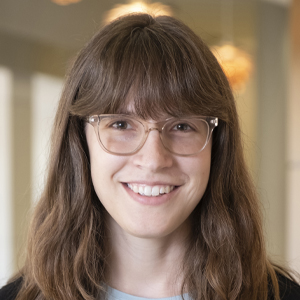What is it like to be a professor at a primarily undergraduate institution?
For this week’s academic careers post, I looked into what being a professor at a primarily undergraduate institution is like. I wanted to know how professors decided they wanted this career and how they prepared for it, how they fund and design their research, and many other things in between.
I reached out to six professors who were kind enough to share their experiences with me:
- Ruby Broadway, associate professor at Dillard University, a historically Black, private liberal arts school with about 1,200 undergraduate students, in New Orleans
- Darrell Killian, associate professor at Colorado College, a private liberal arts school with about 2,000 undergraduate students, in Colorado Springs
- Alix Purdy, associate professor at Amherst College, a private liberal arts school with about 2,000 undergraduate students, in Amherst, Massachusetts
- Lisa Ryno, assistant professor Oberlin College, a private liberal arts school and music conservatory with about 3,000 undergraduate students, in Oberlin, Ohio
- Jen Schroeder, assistant professor at Young Harris College, a private liberal arts school with about 1,500 undergraduates, in Young Harris, Georgia
- Scott Simpson, assistant professor at St. Bonaventure University, a private school with more than 2,500 undergraduate and graduate students, in Allegany, New York
Each PUI is different
The first thing I realized during my interviews was summed up succinctly by Purdy at Amherst: “PUIs can be very different from each other.”
Nearly everyone I spoke to asked me some version of “You’re talking to people at other schools too, right?” to make sure I didn’t assume that their personal experience is universal.
There’s no single PUI experience, and very little will be true everywhere. However, by collecting stories from several people at institutions all over the country, I have managed to isolate some core aspects of the job. If you have decided that this is the job for you, maybe hearing from people at different schools will help you clarify what you want to look for in a college or university when you’re ready to apply.
Core aspects of the job
At all the institutions, there are three main demands on a professor’s time:
-
Teaching, including developing courses, lecturing, grading and conducting office hours.
-
Research, including reading and writing papers, developing research plans, mentoring students in the lab, and writing grants (more on this later).
-
Service, including sitting on committees, doing departmental tasks, overseeing and directing programs, and advising student organizations and groups.
Each school — and even each professor — weighs teaching, research and service differently, and the job varies accordingly.
Discovering teaching and getting experience
Teaching is a central part of working at a PUI, and the way the professors view teaching sets them apart from professors at research institutions.
Almost all of the people I spoke to discovered at some point, often while pursuing a doctorate, that they wanted to teach, and that’s what led them to seek this career path. They also nearly all sought out teaching opportunities before applying for jobs at PUIs, not just because they wanted something on their CV, but because they really wanted to teach.
Several of the professors I spoke to mentioned studying pedagogy, either formally, by taking courses, or informally, by reading on their own.
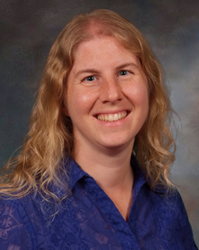
Schroeder at Young Harris College described how she learned to teach once she realized it was what she wanted to do: “The grad school association had a teaching workshop, and I went twice a week over the summer. They taught how to create syllabi and design assignments. Many big institutions have opportunities like this.” Then she taught an evening course a few nights a week to really hone her teaching skills.
Ryno at Oberlin described her early experience with teaching this way: “I thought initially I would earn my Ph.D. and go into biotech, but it turned out that I actually really missed talking to people and figuring out what helps people learn. When I realized I wanted teaching to be part of my career, my mentor was very supportive. I (was a teaching assistant for) the grad chemical biology classes that my mentor was teaching and did a few guest lectures.” After earning her Ph.D., Ryno taught as an adjunct during her postdoctoral fellowship.
Killian at Colorado College described his time as a teaching assistant in grad school as informative. He said that, while other students found having to be a TA an annoying obligation, “I didn’t find it burdensome at all, and it came naturally to me. I didn’t feel it was really work.”
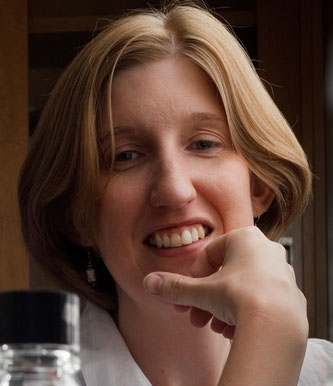
Teaching doesn’t have to come naturally to you to work at a PUI, but you have to want to do it and be committed to learning how.
“I’m not a natural public speaker. I don’t like getting up in front of people and lecturing. But I saw I had the potential to grow to appreciate that. I knew I could develop that skill,” said Purdy at Amherst. “I really enjoyed the energy of the students, and I enjoyed being in the classroom. Getting over the public speaking aspect was something I had to work on.”
Putting teaching into practice
While teaching is central, different PUIs have different expectations when it comes to performance and time.
On one end of the spectrum are Young Harris and SBU, where teaching is the central priority. “Teaching is taken most seriously” Simpson at SBU said. To be successful there, “you have to be an excellent teacher and OK in research and service.”

Purdy said that classroom teaching plays a slightly smaller, yet still essential, role at Amherst, where research is the No. 1 priority. “The teaching loads are not what they are at most PUIs. We only teach two courses a semester. When I teach microbiology with lab, that counts as my two. I have colleagues at other institutions who teach a lot more,” she said.
Even given this variability, there are still some consistencies. At most PUIs, besides teaching a course like introductory biology, for which a structure — or at least a favored textbook — may already exist, you are likely to be called on to develop entirely new courses in your specialty.
Killian said that search committees look for this ability in job candidates: “We look for someone who adds something to the subdiscipline. That leaves room for them to develop an upper-level course that isn’t redundant with what we already have,” he said. “I teach stem cells and developmental bio, for example, because it’s what I study.”
When Schroeder was new to designing her own courses, she relied on publisher materials but found out quickly they were “not ideal.” “The text is not conducive to actual learning,” she said. Now, “for every hour I lecture, I spend three to four hours preparing.”
She also noted that, at a smaller school like Young Harris, a professor might be called on to teach courses outside of their specialties. She has taught intro courses and courses in her cell biology specialty, but she also has taught courses in immunology and genetics, which required her to brush up on those topics. She said she enjoys this aspect of the job because she’s constantly learning.
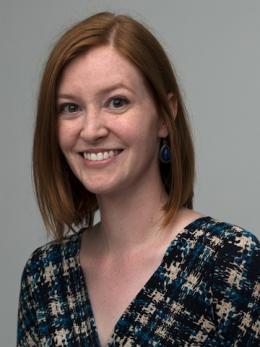
Purdy once had to design a microbiology course from scratch and needed some guidance. “I reached out to colleagues at other institutions, and they were so generous and shared with me some exercises, and that was enough to get me off the ground and going on my own,” she said.
Teaching also goes on in the lab, of course.
For Ryno at Oberlin, “50% of your job is in classroom education. The other 50% is dedicated to teaching in your laboratory.”
For example, she said, you’ll need to provide instruction on techniques, like how to pipette, but also teach students how to think like scientists.
“I take it so seriously. The people in my lab are the next generation of scientists. We need the best, most careful, fastidious, people solving our problems,” Ryno said. “I also can act as a counselor and help students learn that a failure of an experiment is not a failure as a person.”
Designing research plans
Working at a PUI puts some boundaries on what research can be done. But, when these limitations are taken into account realistically, truly excellent research can be done at these institutions.
Resources: While occasionally principal investigators at PUIs get R01 awards from the National Institutes of Health, it’s uncommon. You probably won’t have millions of dollars to pour into your research. But smaller grants can go a long way at a PUI.
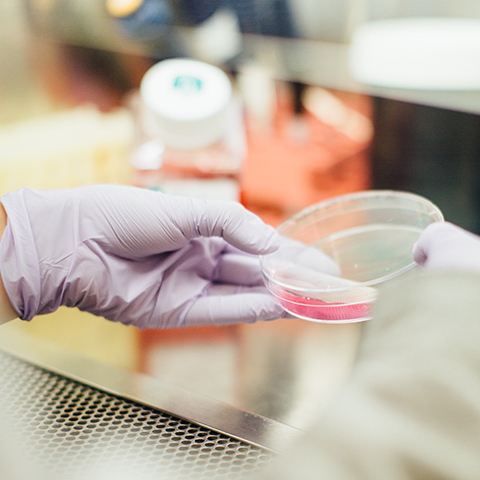
Also, you may have fewer physical resources, such as core facilities and very specialized equipment. But you don’t have to completely rule out specialized equipment. Several of the professors I talked to addressed this scarcity by collaborating with people in their field (in some cases people they worked with in grad school or during their postdoc) and with colleagues at nearby institutions.
Purdy said she thought a lot about available resources when choosing her model organism, the fruit fly, but still was caught off guard by the demands.
“I had thought that it would be easier than it was,” she said. “I thought, ‘Oh, I’m not working on mice! This will be easy at a PUI.’ But it does require a room than conforms to the arthropod containment regulations. I think ultimately I got very lucky. At Amherst there was enough funding in place to renovate a room.”
Students: Undergrads can and do carry out excellent work in the lab. The limitation, however, is that they don’t stay around very long. Often they are in the lab for only their junior and senior years, or even less in some cases, and can devote themselves full time only in the summer (if that).
Research projects should not be so complicated that it takes a student’s entire time in the lab to learn how to set up the experiment and shouldn’t be so time consuming that they can’t go to classes and do their homework. A Ph.D. student might spend a year optimizing a complex experiment, but that’s not realistic for an undergrad.
“When I moved on to do my postdoc,” Killian said, “I very specifically wanted to stay working with C. elegans because I thought it would be amenable to working at a liberal arts college. Students could develop skills quickly.”
Time: “The speed at which you do research in a R1 (institution) is astronomically faster than what can happen when you are only working with undergrads,” Ryno told me. “All of (my students) have been remarkable and brilliant, but you’re spending a lot of time teaching them how to think like a scientist as well as the techniques. It takes a lot of time.”
Killian said it’s important to choose a project that you can do at a slower pace. “If you’re in competition with a big lab, that’s not a great place to be. You can get scooped. There needs to be a little bit of strategy about not competing with that big lab,” he said.
However, he also pointed out that that doesn’t always mean abandoning that project. Another alternative, he said, is to “reach out to them and collaborate. Have the conversation, and be frank about that.”
Schroeder, meanwhile, has strictly limited time and budget for research at Young Harris College. She does research primarily with her senior students who are completing capstone projects and has just a few hundred dollars per student. She plans projects to suit this time scale and budget and still gets data that she can present at meetings, though she doesn’t usually publish her research in journals.
Funding research
Startup packages vary widely from school to school, and some might be enough for the professor to not seek external funding and still do a good amount of research. Some faculty members can lobby their department for funds, too.
There are grants geared toward research at PUIs. R15s from the NIH, for example, are described as supporting “small-scale research projects at educational institutions … that have not been major recipients of NIH support.” The National Science Foundation also offers Research in Undergraduate Institutions (RUI) and Research Opportunity Awards (ROA) grants for faculty at PUIs. Other independent organizations provide grants as well.
Purdy said that one challenge when applying for grants is that reviewers don’t always seems to understand what research at a PUI is like. “Sometimes the reviewers’ comments can still be a bit harsh — indicating that they don’t quite understand what we’re dealing with,” she said.
Killian said that many PUIs don’t require you to have grants: “Tenure and promotion (committees) will reward having a grant but won’t necessitate having one.”
However, in practice, grants make a difference. “I had a RUI grant for a few years,” he continued, “and the difference between having it and not having it was enormous. I had a full-time tech, and I didn’t have to lobby to the department.”
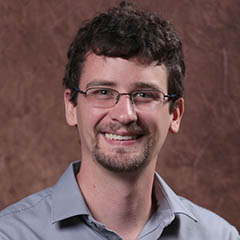
Even though there might be less pressure to get external funding at some PUIs, trying is still looked on favorably and certainly will help doing research tremendously.
Simpson mentioned that, for tenure packages at SBU, applying for grants, even if you don’t get them, is seen positively. Simpson has funding from the NSF and the American Chemical Society, which allows him to pay his students and do more with his research.
“Without my grants, the research would have been more ‘play time,’” he said. And, while there is definitely value in research that purely teaches students about working in a lab, Simpson said that he wanted his research to be publishable, and his grants help achieve that.
A day at a PUI
Ryno described for me a typical Wednesday during a fall or spring semester.
“I’d be at the office about nine hours a day. The first hour or so would be dealing with emails and prepping lecture. Typically, I’d have lecture for an hour or so in the morning. Then some sort of faculty meeting, held maybe during lunch. Then, in the afternoon — that tends to be when research students work — I’m in and out of my office and the lab. Maybe office hours in there, when students from my classes can come by and ask questions. Then I prep for the next day, and often spend some time grading.”
In the summer, Ryno said, she’s in the lab just about all day, every day — “with some time in the office trying to write up results or grants, designing lab experiments for next year or studying pedagogical techniques that I might want to incorporate next year.”
Purdy also said that summer days are usually devoted to lab work and writing, but Killian has a slightly different system.
“Colorado College has the block plan. We teach course one at a time, and each lasts 3.5 weeks and meets every day,” he explained. “I teach five of eight blocks a year. Sometimes my teaching responsibilities are really heavy, and my lab students are seasoned, and I can just catch up in lab in the afternoon.”
When he’s not teaching a block, he said, he can spend the whole day in the lab. He also added that “there’s no shortage of service and administrative activities.” Right now, for example, he’s leading a search for a new tenure-track position. “That stuff ramps up after a few years,” he said.
Simpson at SBU said that he spends 60% of his job on teaching, but, “in the summer time, that’s when I switch modes and go research-heavy.” However, he adds that there is flexibility and other SBU professors’ days may look very different. “You can kind of mix and match your percentages. I know at SBU a lot of people pick service over research.”
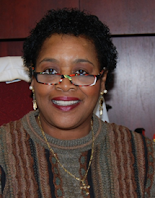
Ruby Broadway at Dillard University is the most senior of the professors I interviewed. She has been at Dillard for 28 years.
Over the years, how she uses her time has evolved. Her days now are filled with service rather than research: She runs several grant-funded programs that aim to maximize access to research for students. A typical day for her now is spent largely in her office. Though she still interacts with students a lot. “Never a dull moment,” she said.
Pros and cons of the job
I asked my sources the obligatory question “What do you like/dislike about your job?” Here’s what they had to say.
Pros
Freedom: “One of the most amazing things about being a PI at a place like Oberlin is that I am able to have complete intellectual creative license,”Ryno said. More bluntly, Simpson said, “You get a lot of freedom and are told rarely what to do.”
Another type of freedom that Purdy described was the freedom of not having the careers of postdocs and Ph.D. students fully depending on whether a grant was awarded. She does seek and get grants, but she doesn’t have to sit in an office all day stressing that a postdoc and their entire family is dependent on her funding.
Working with students: Every professor I spoke to said that working closely with students, sharing knowledge with them, watching them grow and develop, and following up with them years later as they pursued their own careers, were big pluses of the job. “That interaction with students, helping them develop their thinking, and making up their minds as to what they want to do — I love every bit of it,” Broadway said.
Purdy echoed that sentiment: “I love introducing the world of microbiology to students. It’s like opening a door to world that they didn’t even know was there — and there’s just so much amazing stuff to talk about. I deeply love sharing this appreciation for the natural world.”
Ryno said that watching a student become a scientist is the best part of her job. She explained: “I don’t sit at my desk all day just writing grants or having meetings. I’m standing next to the student, teaching them how to use an instrument or how to pipette. I wouldn’t trade that for anything.”
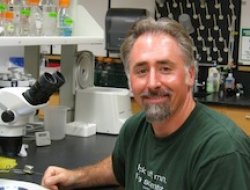
It’s rewarding: “In the research lab, you can go sometimes a lengthy time without having a reward,” Killian said. “No one works in a research lab and comes out of there every day thinking, ‘Oh, wow, time well spent!’ There’s just so many times when something just doesn’t work. That can be exceptionally frustrating if that is the main thing your job is all about. But, when you add the teaching component to that, just about every day I will go home and there’s something about the day that makes me feel good. Maybe the lab isn’t going well, but my lecture went well. Or a student drops by and says, ‘Thanks for writing that letter. I got into the program!”
Cons
Pace of research: “Undergraduate researchers are not around that long,” Simpson emphasized. “You maybe get two years of research with them, which can slow your research progress, as turnover is huge.”
Isolation: Many professors mentioned having to be intentional about keeping in touch with people in your field, because you may be the only expert in your field at your school. This wasn’t necessarily a con so much as something to keep in mind and to be intentional about.
Respect: “Your R1 colleagues will take your science less seriously due to your position. This is just a classist view that most academics have,” Simpson said.
What PUIs look for in applicants
Well, that, like everything else, varies from institution to institution. However, as Killian put it, “One thing we are definitely looking for is some degree of evidence that someone knows they want to be at a PUI.”
He continued: “I’ve seen many applications that read very much like the applicant is applying to 45 different jobs that year — from R1 to regional state university to a liberal arts college. And there’s nothing in their cover letter that addressed why they want all the responsibilities of teaching and mentoring at a PUI. If it’s well addressed with things that back it up, that gets my attention.”
Ryno also described search committees seeking candidates who seem to really understand the PUI environment.
“In the research proposals, we look for the ability to incorporate undergrads directly into the investigation. We are looking for reasonable expenditure. Whether that’s through designing projects that are not instrumentation-dependent or extremely expensive, or if they do require that, the person has thought about collaboration.”
Ryno continued: “Of course, we like to see demonstrated research productivity — that someone can successfully complete projects and write manuscripts. Though we also look carefully at the teaching statement: That is a critical component. It has to be something true and something that the person has thought deeply about. It is obvious when people haven’t given much thought to teaching.”
Purdy said that, at Amherst, “We look for candidates who show evidence of strong research potential, because we really are looking for folks who can mount an active and robust research program. We want to see strong papers from graduate school and postdoc positions. If folks have grants, that’s a plus. We also want some evidence that the person genuinely cares about teaching — and that they care about developing their teaching as a craft and that they want to grow as a teacher and a mentor.” Importantly, she mentioned that applicants don’t need to come in having taught whole courses already.
At the more teaching-focused institutions, such as Young Harris College teaching potential and experience matter the most in both job and tenure applications. “Tenure is 90% teaching and 10% research,” Schroeder said.
Broadway said that at Dillard, aside from teaching and research, evidence of being a team player and having a true desire to further the mission of the school are top priorities when searching for new faculty. “You can tell immediately in the interview if someone is just filibustering” she said.
Finally, your application should demonstrate that you’ve thought carefully about diversity. Killian said that Colorado College won’t seriously consider applicants who don’t seem to care about diversity.
“If someone doesn’t address that head-on, they are at risk of being triaged. … How will you contribute to the school’s mission of creating a diverse learning environment? If it’s clear that you’ve never thought about those issues before when you’re asked, that will not go well.”

More advice about getting a job at a PUI
In 2014, Joseph Provost, a professor at the University of San Diego, wrote a series of articles for the ASBMB blog The Substrate and for ASBMB Today about applying for positions at primarily undergraduate institutions. They are listed below.
Enjoy reading ASBMB Today?
Become a member to receive the print edition four times a year and the digital edition monthly.
Learn moreFeatured jobs
from the ASBMB career center
Get the latest from ASBMB Today
Enter your email address, and we’ll send you a weekly email with recent articles, interviews and more.
Latest in Careers
Careers highlights or most popular articles

Exploring the link between lipids and longevity
Meng Wang will present her work on metabolism and aging at the ASBMB Annual Meeting, March 7-10, just outside of Washington, D.C.

Upcoming opportunities
Calling all biochemistry and molecular biology educators! Share your teaching experiences and insights in ASBMB Today’s essay series. Submit your essay or pitch by Jan. 15, 2026.

Defining a ‘crucial gatekeeper’ of lipid metabolism
George Carman receives the Herbert Tabor Research Award at the ASBMB Annual Meeting, March 7–10, just outside of Washington, D.C.

Building the blueprint to block HIV
Wesley Sundquist will present his work on the HIV capsid and revolutionary drug, Lenacapavir, at the ASBMB Annual Meeting, March 7–10, in Maryland.

Upcoming opportunities
Present your research alongside other outstanding scientists. The #ASBMB26 late-breaking abstract deadline is Jan. 15.

Designing life’s building blocks with AI
Tanja Kortemme, a professor at the University of California, San Francisco, will discuss her research using computational biology to engineer proteins at the 2026 ASBMB Annual Meeting.

